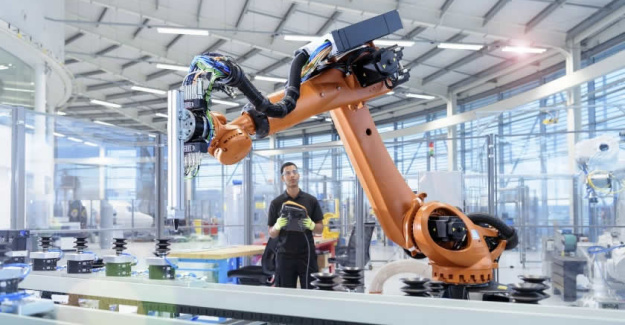In the fast-growing landscape of technology, the strategic selection of robotic applications is pivotal for organisations aiming to stay competitive and efficient. In this article, we delve into the multifaceted considerations that decision-makers should weigh when choosing an application of robotic. Understanding these factors ensures a thoughtful and informed approach to implementation.
Understanding the Application Landscape
Robotic applications have transcended the realm of science fiction, becoming integral components in various industries. From healthcare to logistics, the breadth of applications showcases the versatility and transformative potential of robotic technologies. Recognizing this diversity is fundamental to understanding the impact of robotics on modern society.
Diving deeper, we explore specific types of robotic applications, including healthcare robotics, industrial robotics, agricultural robotics, and more. Each sector presents unique challenges and opportunities. Understanding these nuances enables decision-makers to align their goals with the specific demands of the chosen robotic application.
Defining Your Objectives
The first step in selecting the right robotic application is to define clear objectives. By identifying specific tasks for automation and aligning them with organisational goals, decision-makers set the stage for successful implementation. This clarity helps in selecting a robotic application that directly contributes to the overarching mission of the organisation.
Considering long-term organisational needs is crucial. A robotic application should not only address current requirements but also be scalable for future expansion. Anticipating technological advancements ensures that the chosen application remains relevant and adaptable to evolving industry landscapes.
Technical Considerations
Seamless integration with current infrastructure is paramount for a smooth transition to robotic applications. The chosen robotic system should demonstrate interoperability with other technologies, minimising disruption during implementation. Compatibility ensures a cohesive and efficient workflow.
Customization capabilities, adaptability to changing work environments, and modular designs enhance flexibility and upgradability. These features empower organizations to tailor the robotic system to their specific needs and easily incorporate changes as requirements evolve over time.
The ease of programming is a critical factor. A user-friendly interface and minimal training requirements for operators contribute to a smoother adoption process. Simplified programming not only accelerates the learning curve but also enhances the overall user experience.
Performance and Efficiency
The application of robotic technology often involves tasks that demand precision and accuracy. Evaluating the robotic system's accuracy for specific tasks ensures consistent performance, particularly in sectors like healthcare and manufacturing where precision is paramount for success.
Efficiency is a key metric in assessing the performance of a robotic application. Decision-makers should balance speed with accuracy to achieve optimal efficiency. Understanding the required throughput and the pace at which tasks need to be accomplished ensures that the chosen robotic application aligns with production goals.
Cost Considerations
While upfront costs are a tangible consideration, decision-makers must perform a cost-benefit analysis to evaluate short-term gains. Understanding the initial investment is crucial, but it should be viewed in the context of the value and return on investment (ROI) it brings to the organisation over time.
Calculating the total cost of ownership (TCO) provides a comprehensive view of the long-term operational costs. This includes maintenance, upkeep expenses, and other associated costs. Anticipating the ROI over an extended period ensures financial viability and sustainability in the implementation of robotic applications.
Safety and Compliance
The safety of human operators is paramount in any robotic application. The robotic system should incorporate safety features and adhere to protocols for human-robot collaboration. Compliance with industry standards and regulations ensures a secure and ethical working environment.
As robotics continue to advance, ethical considerations become more pronounced. Ensuring fairness and inclusivity in the implementation of robotic applications is essential. Decision-makers should make ethically sound choices, considering the broader societal implications of their technological investments.
Vendor and Support Considerations
The reputation of the vendor plays a crucial role in the success of a robotic application. Thorough research into a vendor's track record, customer reviews, and testimonials provides insights into their reliability and credibility. Choosing a reputable vendor sets the foundation for a successful implementation.
Building long-term partnerships with vendors committed to updates and upgrades is essential for future-proofing. The accessibility of technical support ensures that organisations have a reliable partner to address any issues that may arise during the lifecycle of the robotic application.
Conclusion
In conclusion, choosing the right application of robotic is a multifaceted decision that requires careful consideration of various factors. By understanding the application landscape, defining objectives, and navigating technical, performance, cost, safety, and ethical considerations, organisations can make informed decisions. Evaluating vendors, excluding case studies, learning from real-world examples, and addressing challenges contribute to a holistic approach in selecting applications of robotic. As organisations embark on the journey of integrating robotics, the key lies in choosing wisely and strategically to unlock the full potential of this transformative technology in various industries.

 Exploring Cardano: Inner Workings and Advantages of this Cryptocurrency
Exploring Cardano: Inner Workings and Advantages of this Cryptocurrency Seville.- Economy.- Innova.- STSA inaugurates its new painting and sealing hangar in San Pablo, for 18 million
Seville.- Economy.- Innova.- STSA inaugurates its new painting and sealing hangar in San Pablo, for 18 million Innova.- More than 300 volunteers join the Andalucía Compromiso Digital network in one month to facilitate access to ICT
Innova.- More than 300 volunteers join the Andalucía Compromiso Digital network in one month to facilitate access to ICT Innova.-AMP.- Ayesa acquires 51% of Sadiel, which will create new technological engineering products and expand markets
Innova.-AMP.- Ayesa acquires 51% of Sadiel, which will create new technological engineering products and expand markets STATEMENT: ELFBAR and LOST MARY reveal progress in the fight against illicit vapers (1)
STATEMENT: ELFBAR and LOST MARY reveal progress in the fight against illicit vapers (1) STATEMENT: ELFBAR and LOST MARY reveal progress in the fight against illicit vapers (2)
STATEMENT: ELFBAR and LOST MARY reveal progress in the fight against illicit vapers (2) The PSOE is holding a Federal Committee this Saturday that will serve to close ranks with Sánchez so that he does not resign
The PSOE is holding a Federal Committee this Saturday that will serve to close ranks with Sánchez so that he does not resign The Ibex 35 closes the week at its highest since 2015 and is already looking at 11,200
The Ibex 35 closes the week at its highest since 2015 and is already looking at 11,200 How Blockchain in being used to shape the future
How Blockchain in being used to shape the future Not just BTC and ETH: Here Are Some More Interesting Coins Worth Focusing on
Not just BTC and ETH: Here Are Some More Interesting Coins Worth Focusing on UPV students build a prototype of a wooden house to move to Equatorial Guinea
UPV students build a prototype of a wooden house to move to Equatorial Guinea The UA opens the call for the Impulso 2024 Awards for the best innovative business initiatives
The UA opens the call for the Impulso 2024 Awards for the best innovative business initiatives ALI, virtual assistant from Alicante, internationally recognized by the OECD
ALI, virtual assistant from Alicante, internationally recognized by the OECD Retrópolis brings the golden age of video games and computing to the UPV
Retrópolis brings the golden age of video games and computing to the UPV A million people demonstrate in France against Macron's pension reform
A million people demonstrate in France against Macron's pension reform Russia launches several missiles against "critical infrastructure" in the city of Zaporizhia
Russia launches several missiles against "critical infrastructure" in the city of Zaporizhia A "procession" remembers the dead of the Calabria shipwreck as bodies continue to wash up on the shore
A "procession" remembers the dead of the Calabria shipwreck as bodies continue to wash up on the shore Prison sentences handed down for three prominent Hong Kong pro-democracy activists
Prison sentences handed down for three prominent Hong Kong pro-democracy activists ETH continues to leave trading platforms, Ethereum balance on exchanges lowest in 3 years
ETH continues to leave trading platforms, Ethereum balance on exchanges lowest in 3 years Investors invest $450 million in Consensys, Ethereum incubator now valued at $7 billion
Investors invest $450 million in Consensys, Ethereum incubator now valued at $7 billion Alchemy Integrates Ethereum L2 Product Starknet to Enhance Web3 Scalability at a Price 100x Lower Than L1 Fees
Alchemy Integrates Ethereum L2 Product Starknet to Enhance Web3 Scalability at a Price 100x Lower Than L1 Fees Mining Report: Bitcoin's Electricity Consumption Declines by 25% in Q1 2022
Mining Report: Bitcoin's Electricity Consumption Declines by 25% in Q1 2022 Oil-to-Bitcoin Mining Firm Crusoe Energy Systems Raised $505 Million
Oil-to-Bitcoin Mining Firm Crusoe Energy Systems Raised $505 Million Microbt reveals the latest Bitcoin mining rigs -- Machines produce up to 126 TH/s with custom 5nm chip design
Microbt reveals the latest Bitcoin mining rigs -- Machines produce up to 126 TH/s with custom 5nm chip design Bitcoin's Mining Difficulty Hits a Lifetime High, With More Than 90% of BTC Supply Issued
Bitcoin's Mining Difficulty Hits a Lifetime High, With More Than 90% of BTC Supply Issued The Biggest Movers are Near, EOS, and RUNE during Friday's Selloff
The Biggest Movers are Near, EOS, and RUNE during Friday's Selloff Global Markets Spooked by a Hawkish Fed and Covid, Stocks and Crypto Gain After Musk Buys Twitter
Global Markets Spooked by a Hawkish Fed and Covid, Stocks and Crypto Gain After Musk Buys Twitter Bitso to offset carbon emissions from the Trading Platform's ERC20, ETH, and BTC Transactions
Bitso to offset carbon emissions from the Trading Platform's ERC20, ETH, and BTC Transactions Draftkings Announces 2022 College Hoops NFT Selection for March Madness
Draftkings Announces 2022 College Hoops NFT Selection for March Madness



























